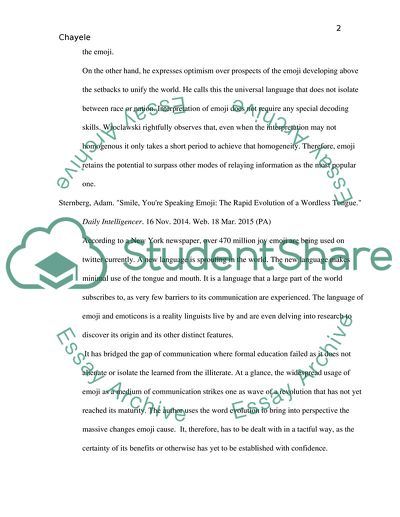Cite this document
(“Emoji In communication: An Annotated Bibliography Essay - 1”, n.d.)
Retrieved from https://studentshare.org/humanitarian/1691083-emoji-in-communication-an-annotated-bibliography
Retrieved from https://studentshare.org/humanitarian/1691083-emoji-in-communication-an-annotated-bibliography
(Emoji In Communication: An Annotated Bibliography Essay - 1)
https://studentshare.org/humanitarian/1691083-emoji-in-communication-an-annotated-bibliography.
https://studentshare.org/humanitarian/1691083-emoji-in-communication-an-annotated-bibliography.
“Emoji In Communication: An Annotated Bibliography Essay - 1”, n.d. https://studentshare.org/humanitarian/1691083-emoji-in-communication-an-annotated-bibliography.


